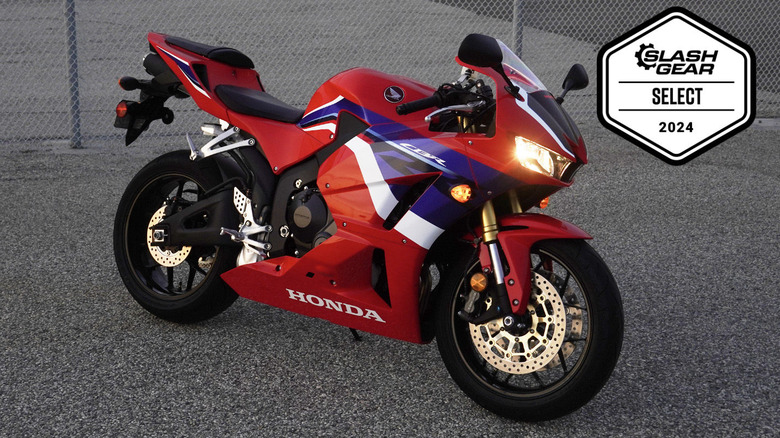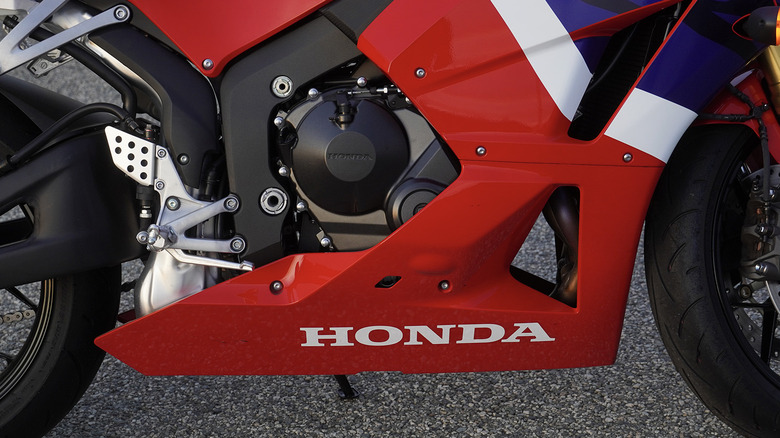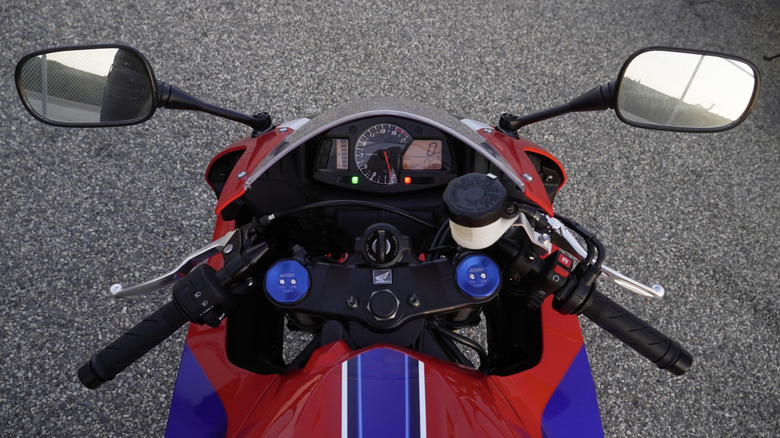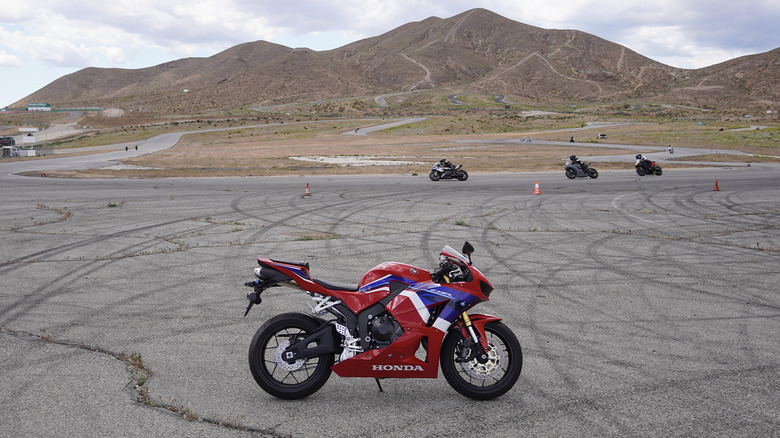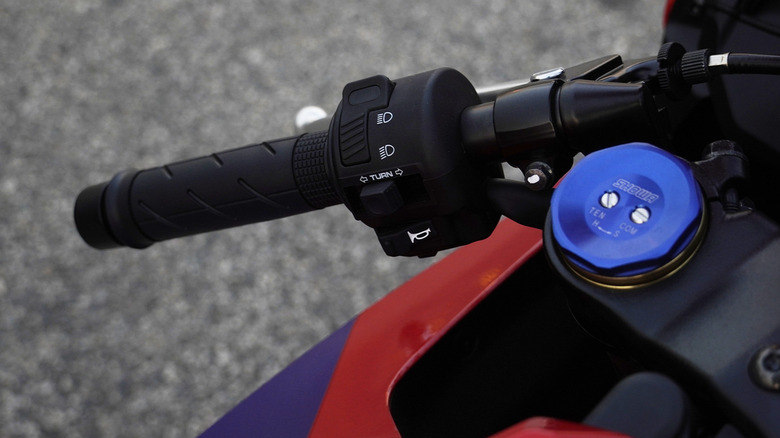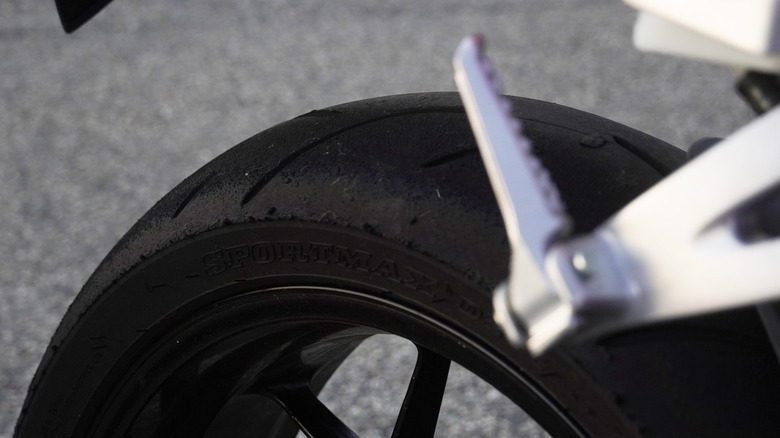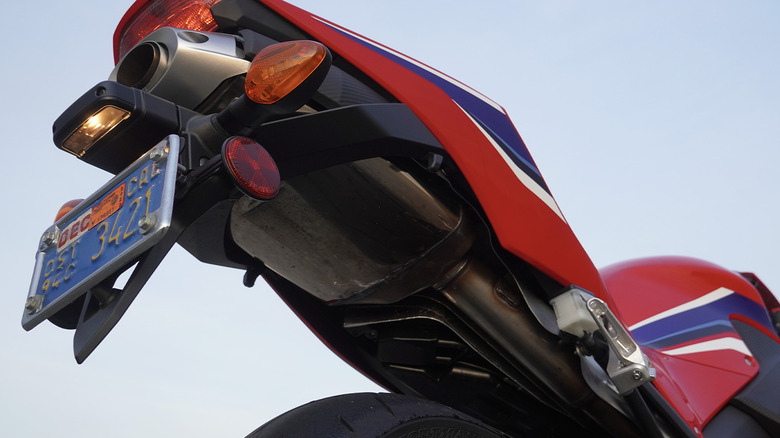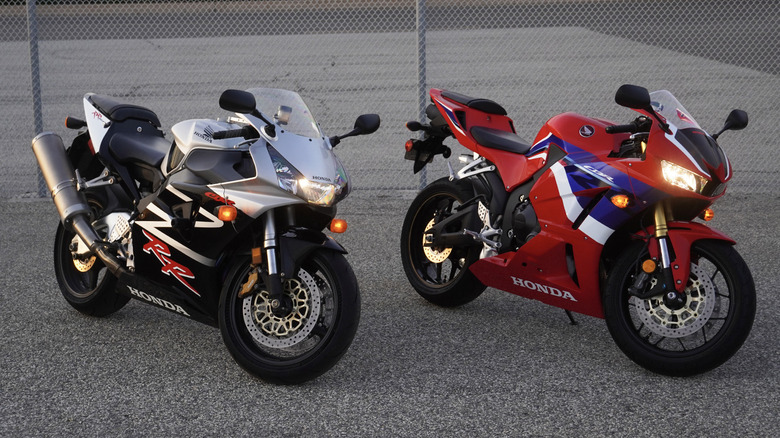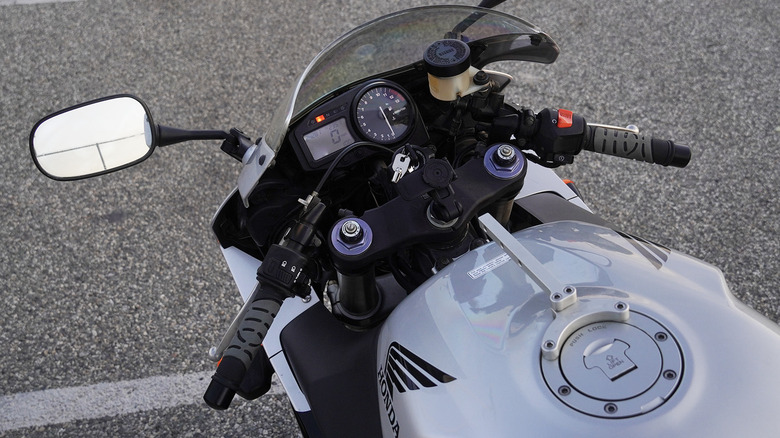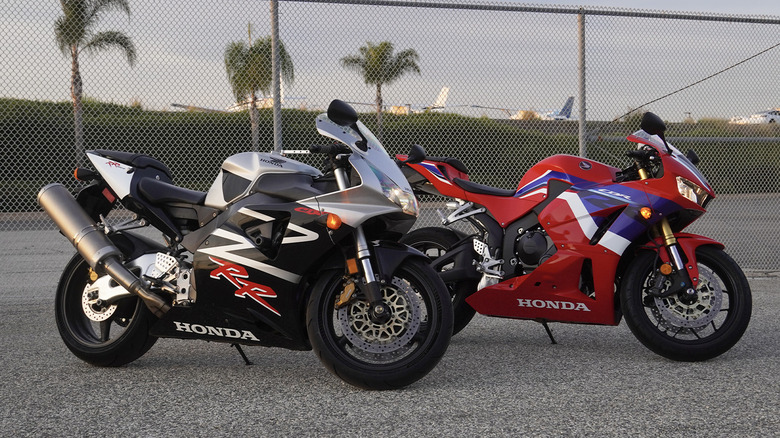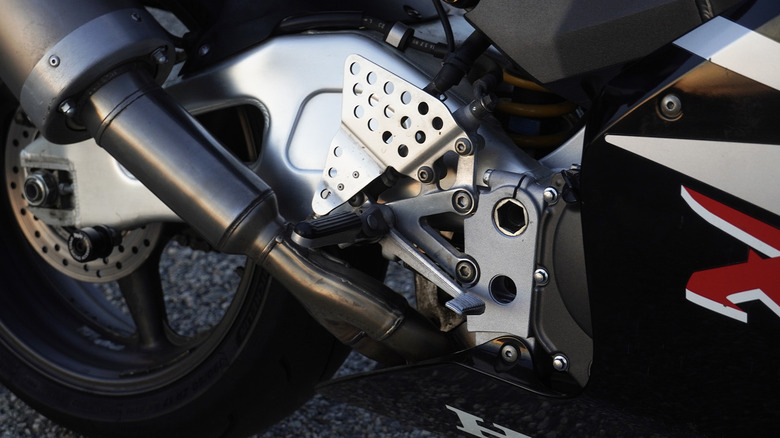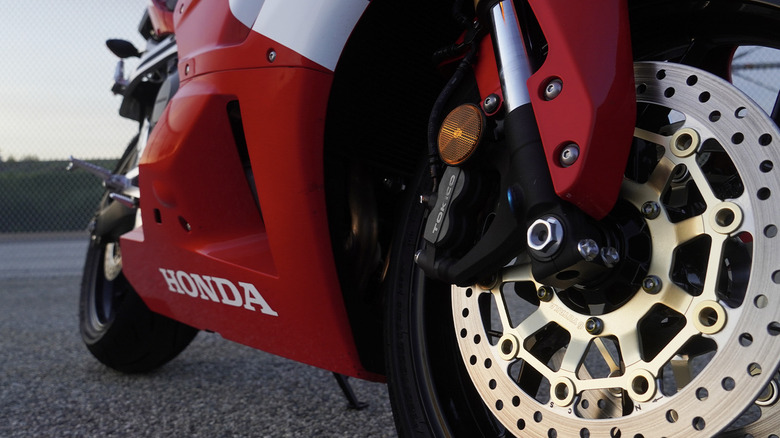2024 Honda CBR600RR Review: So Outdated Yet Still So Good
- Supreme Honda build quality
- Torquey 599cc inline-four punches into another class
- Great for city, highway, canyons, and track riding
- Dated generation traces back to 2013
- Heavier than expected versus the competition
- More serious exhaust or up-spec components might help
Sometimes in this industry, automakers and motorcycle manufacturers only allow journalists a few hours to experience the latest and greatest creations to leave factory floors. The logistics of pre-production testing, marketing, and sales dictate such inconveniences, but long-term loaners provide a much better opportunity for deep thoughts to begin forming—and I'm not just writing this in the hopes of convincing PR professionals to hand out the goods on a more reasonable schedule.
Instead, after spending seven months this year with a 2024 Honda CBR600RR that spanned plenty of riding on city streets, highways, and canyons, plus two separate track days at two separate stages of my training, this resulting review can hopefully better distill everything that the 600RR offers.
At this point, I must reveal that over those seven months, I also bought a 2002 Honda CBR954RR. I set out on the search earlier this summer, originally looking for a stock bike to start a street-legal track build. And without a doubt, time on the 600RR helped to inspire the purchase. Tracing that lineage through-line of Honda's Fireblades, which today go so far overboard in power and performance, helps to provide a better picture for whom, exactly, the CBR600RR might just be the perfect bike.
Inline-four for the win
From the very first rev of that 599cc engine, I started to fall in love with the torquey power of a Honda inline-four. Sure, a 2023 CBR100RR-R Fireblade SP that I rode in 2023 absolutely thumps out of the gate, but the 600RR still delivered a surprising sense of urgency despite the mid-tier displacement. The smooth, eager four-cylinder zooms right up to the 15,000-RPM redline with ease, even if the path leading to such stratospheric rotations lacks some of the lumpy brawn of my Ducati Monster S2R 1000's throaty twin.
The CBR600RR's peak rating of 113 horsepower probably matters less than that broad rev range, in reality. And even if the curb weight of 434 pounds with fluids filled, ready to ride, seems a bit hefty for a 600, this CBR somehow seems so much lighter and nimbler than the "Triple R" Fireblade.
Perfect posture for a compact sport bike
Almost as importantly, I fit. Reminiscing back on that top-spec Fireblade, I can certainly lament the lack of 200-plus horsepower insanity, but on the 600 I rode more comfortably, feet high on the pegs rather than low-squatting like a frog on a log, plus the distance from the seat to the windshield cramped my torso and neck less. And the seat itself actually kept me in place, rather than sliding fore and aft egregiously on the 1000RR-R.
I also thought back to the Aprilia RS 660, one of my favorite bikes of all time, which delivered the perfect positioning for my body at 6'1" with long limbs. My wrists and shoulders never started to ache after long rips through Malibu on either bike. The Aprilia nonetheless nails a slightly more exotic appeal, but that's a tradeoff that Honda probably hopes buyers will make willingly. Chalk the weight difference up to Honda build quality, perhaps—the CBR600RR initially tamps down any light squiggles and trembles from the road or body positioning, and the engine simply outclasses the RS 660 at both low and high revs. Just don't ask about the soundtrack, but more on that later.
Adjusting to older technology
Speaking of tracks, I only rode the CBR600RR a few times before heading out for a track day, actually. Nonetheless, those short stints helped me adjust to the bike's potential more quickly, since hopping onto a new bike and getting acclimated to new controls, new posture, new balance, and new tires—potentially on a new track—always takes a bit of time, not to mention sapping precious ounces of concentration. Luckily, after countless laps around Streets of Willow, I knew at least somewhat, or somehow, how to ride the 600RR.
Or so I thought, until surprising brake sensitivity at track pace left me repeatedly locking up the rear tire after the two longer straights at Streets. Then I realized that the cable clutch, which works just fine with enough positive engagement for street riding, requires a bit more finesse while pushing harder into the tires. A hydraulic actuation setup can help to smooth out the clutch release, as might an aftermarket slipper clutch for the CBR600RR. And of course, quickshifters used by the world's most expensive sport bikes, on which I spend most of my track time, left me absolutely spoiled rotten.
Valuable lessons learned
The cable clutch provided an opportunity for me to hone my skills all the better, though, while serving as a reminder that this bike essentially came out way back in 2013. Over a decade later, Europe and Japan already received a more modern version years ago, with more power, more tech, and improved styling.
So here we sit in the United States, just waiting for that updated 600RR to arrive. Yet as a track training tool, this current (for us) CBR therefore serves quite well. The cable clutch and lack of a quickshifter forced a reset of my mentality, and the passive suspension at the factory settings kept the bike's weight transfer entirely predictable, enhancing my ability to note how much subtle shifts in my own body positioning affected lean angles, front and rear-end grip while braking, the shift rearward under acceleration, and how much my tuck affected aero on the straights.
Stepping down (or up) in class
Between my two track days on the CBR600RR, I also rode Kawasaki's latest and greatest Ninja ZX-4RR at Streets of Willow, too. At a lower rung in terms of power and displacement, the ZX-4RR nonetheless weighs almost exactly as much as the Honda, but adds a bit of modern tech into the equation. A ram air intake system helps the diminutive 399cc inline-four crank out up to 79 horsepower, though the power output varies wildly depending on market and any massaging from aftermarket goodies. The quickshifter works for up and down gearshifts, while a stock slipper clutch helps make up for the similar use of cable actuation. And unlike the Honda, the ZX-4RR also features adjustable traction control and ABS settings, plus a lap timer.
A day on the Kawasaki revealed how much less total weight matters than a bike's dynamics. Somehow, the Ninja reacted much more to my every movement, revealing exactly where I needed to focus on smoothing out inputs—from shifting my hips from side to side without brushing the seat, to softening my wrists and countersteering more gently.
The details come into play
Then, I jumped back on the CBR600RR for another day, again at Streets of Willow. And everything that the ZX-4RR taught me carried over even further, as I settled into awesome lean angles, tearing up the tires right through the chicken band, building up confidence to hit speeds I never even approached the previous day out. The brakes never faded, either, as I committed deeper and deeper into nosedives, though I still needed to focus on that smooth clutch release.
I noticed a few thoughts creeping in, though. Slightly louder exhaust, mostly, might help my brain keep track of revs better when wind noise starts to overwhelm engine vibrations. And that's despite switching over to the new Alpinestars Supertech R-10 helmet, which I swear reduces wind buffeting by about half at any speed. And of course, after jumping from the 399cc to the 599cc inline-four, I just wanted more power more of the time. Greedy boy.
Back out onto public roads, however, and the CBR600RR's displacement, power delivery, and wide rev range work wonders. I found myself riding with personality, as always the track time contributing to confidence in both the bike and myself, so much so that I spent more time paying attention to the road and traffic around me rather than where I needed the engine to sit in the power band, or which gear to stay in up the tight hairpins of Las Flores Canyon. I still wanted more exhaust note, though.
Old meets new
Way back in 2002, Honda built an absolute behemoth of a bike. For the time, of course, because technology marches along steadily as usual leaving everything and everybody in the lurch. But just imagine the turn of the millennium, when Ducati's iconic 996 managed 112 horsepower in a bike that weighed 437 pounds dry. Then along comes Honda with a 954 rated for 154 horsepower, that can reportedly rev to redline for 24 hours straight without causing engine damage, and comes in a package that weighs less wet. Okay...
Sold on that purported reliability, since I need a bike that fires up consistently after potentially long periods sitting, I jumped at a 24,000-mile CBR954RR on Craigslist. Back at the garage after a tentative ride home on decade-old tires, I immediately parked the two Hondas side-by-side for a quick comparison. Somehow the older bike looked more compact, and riding the two back-to-back reveals how much the 2002's character creates more of the cruise missile disposition than the 2024—akin to if the RS 660's size and shape added a bit of bulking muscle mass.
Evolutionary step, or leap?
Yet similarities shone through across the decades, especially from the inline-four engine. The 954 "only" revs to 11,500 but after the low-RPM cruiser torque starts to build, racing toward the full-throttle 154 horsepower snaps the weight rearward as time almost begins to melt. Only full-gas on current superbikes over 200 horsepower matches this 22-year-old Honda, thanks to a building sensation that I almost compare to a turbo spooling up into boost. Not even the outgoing Panigale V2, which delivers an almost identical horsepower figure, matches the fury.
Back to CBR600RR comparisons, though. The 954's bars cant a little lower and narrower, albeit in relation to a seat that's a third of an inch lower, too—the former of which the road cyclist in me certainly appreciates, the latter not so much. Similar footpeg height therefore leads to just a slight additional bend of the knee, but not enough to leave my long legs under too much pressure. And my bike's slightly wider waist combines with a different tank design to create a bit more leverage for crooking my uphill knee in as a hook to hang off while leaned over.
Comparison shopping the CBR954RR
Parked next to each other, the 600 certainly looks lighter, with a lithe and athletic presence the 954's additional mass lacks. But from a stylistic perspective, I prefer the 1990's aesthetic with a hint more angularity up front. Glancing from cockpit to cockpit also reveals how little difference in terms of tech divide the two, with surprisingly similar handlebar switchgear, tachometer, and digital dash layouts. The rearview mirrors might even bear the same part number.
So while shopping, I figured, if I wanted to skip over modern adjustable dampers and a quickshifter and selectable ride modes, why not go for the used 954 at half again the power for less than half the price? But of course, my bike needs an aftermarket exhaust setup ASAP—despite the cubic centimeters of additional displacement, the massive muffler simply drowns the 954's engine. Even more than the undertail exhaust of the 600, believe it or not.
Why did Honda skip out on special editions?
Speaking of undertails, my 954 needs a tail tidy, too. Such modifications and maintenance costs obviously factor into the decision of whether to buy a current CBR600RR, for daily commuting or weekend canyon carving or track time alike. I keep everything crossed my CBR954RR lives up to Honda's legendary reliability, but every time I pull out for a ride, I do keep an ear out for any strange noises or grinding or rumbling or or or...
Then again, buying a 2024 CBR600RR essentially equates to buying a 2013 model year, just without the deleterious effects of time (not to mention other riders not necessarily riding well on a used bike). And to me, I cannot fathom the fact that Honda kept this generation underway in the United States market for so long without at the very least offering some kind of up-spec package—an SP or Triple R with better forks, or Brembo brakes, or a spicy exhaust system, maybe. Just to stay a little more relevant among the competition.
2024 Honda CBR600RR Verdict
Still, as I handed back the key to the CBR600RR after living with such an excellent option in my garage for so long, part of me wanted to keep ahold for longer. Of course I anthropomorphize all my babies, and the 954 needs my attention, too. But the emotional aftereffects of taking in such a solid sport bike as a stepchild, one on which I enjoyed so much time in almost every riding scenario (other than rain) pull at the gut strings (if gut strings exist).
Great on track, great, on road, not too awful in traffic, and a ton of fun in the canyons, this bike somehow still works for me, and for Honda, more than a decade later. Which only raises the question of how much of a step forward the next generation — already available in RoW markets — can actually take. And, indeed, whether adding more tech might in reality take anything away from such a spectacular motorcycle.
